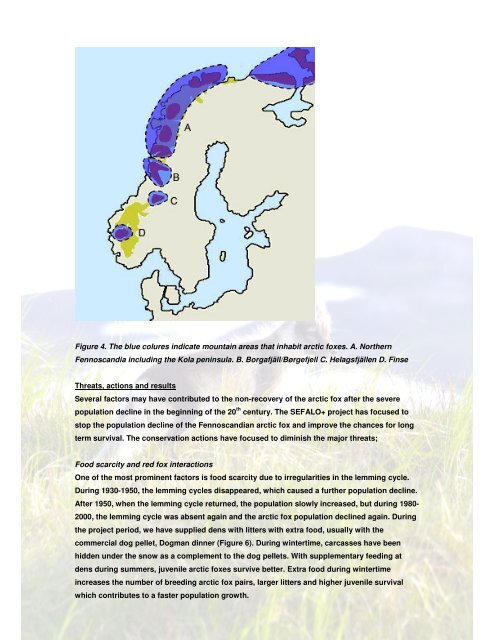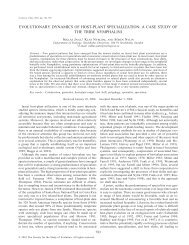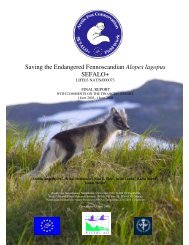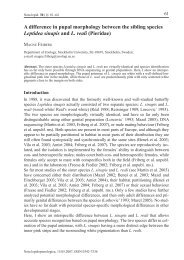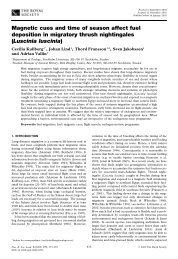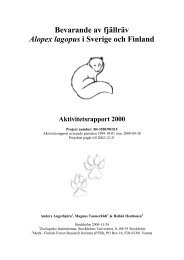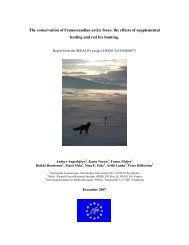Layman's report
Layman's report
Layman's report
You also want an ePaper? Increase the reach of your titles
YUMPU automatically turns print PDFs into web optimized ePapers that Google loves.
Figure 4. The blue colures indicate mountain areas that inhabit arctic foxes. A. Northern<br />
Fennoscandia including the Kola peninsula. B. Borgafjäll/Børgefjell C. Helagsfjällen D. Finse<br />
Threats, actions and results<br />
Several factors may have contributed to the non-recovery of the arctic fox after the severe<br />
population decline in the beginning of the 20 th century. The SEFALO+ project has focused to<br />
stop the population decline of the Fennoscandian arctic fox and improve the chances for long<br />
term survival. The conservation actions have focused to diminish the major threats;<br />
Food scarcity and red fox interactions<br />
One of the most prominent factors is food scarcity due to irregularities in the lemming cycle.<br />
During 1930-1950, the lemming cycles disappeared, which caused a further population decline.<br />
After 1950, when the lemming cycle returned, the population slowly increased, but during 1980-<br />
2000, the lemming cycle was absent again and the arctic fox population declined again. During<br />
the project period, we have supplied dens with litters with extra food, usually with the<br />
commercial dog pellet, Dogman dinner (Figure 6). During wintertime, carcasses have been<br />
hidden under the snow as a complement to the dog pellets. With supplementary feeding at<br />
dens during summers, juvenile arctic foxes survive better. Extra food during wintertime<br />
increases the number of breeding arctic fox pairs, larger litters and higher juvenile survival<br />
which contributes to a faster population growth.


